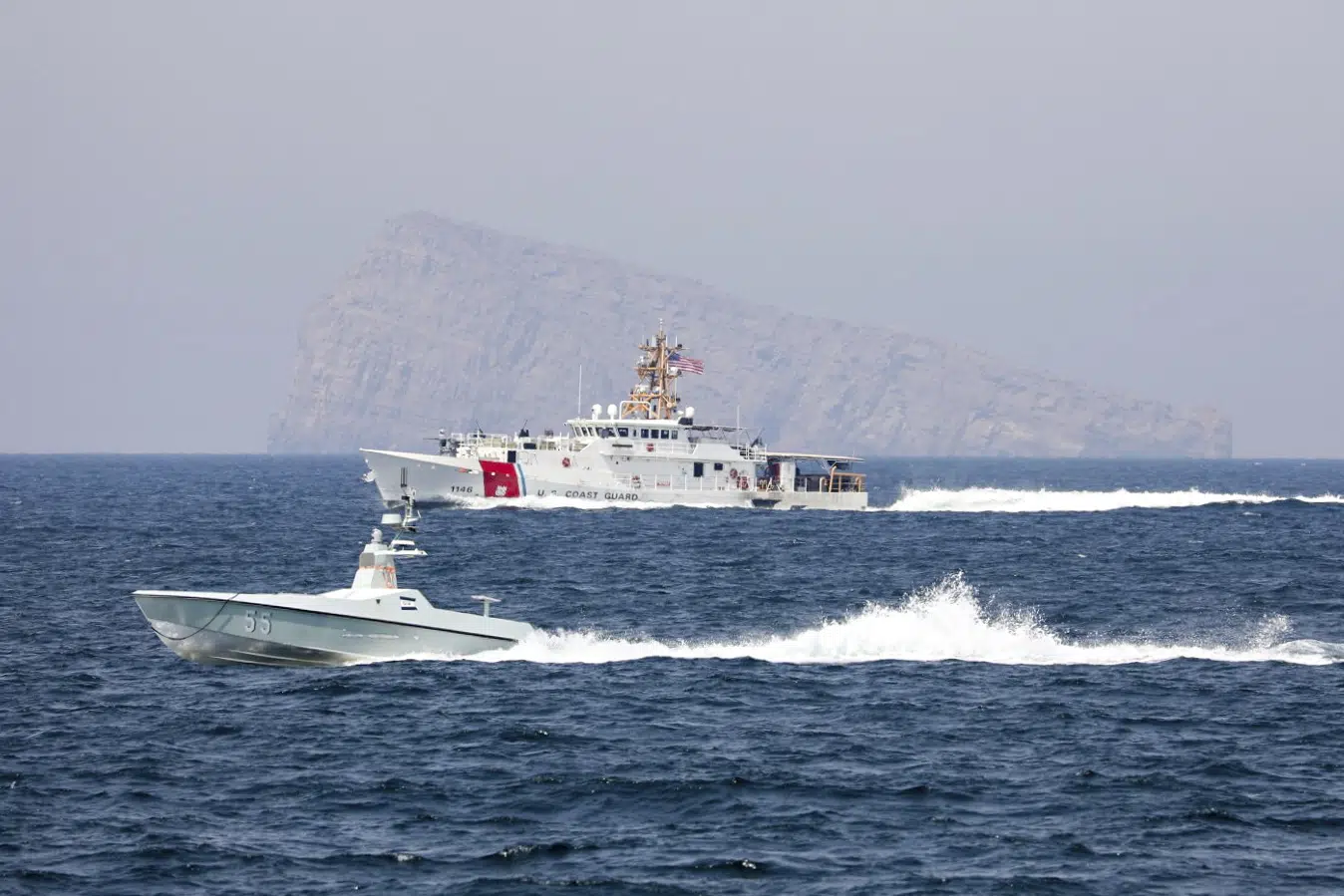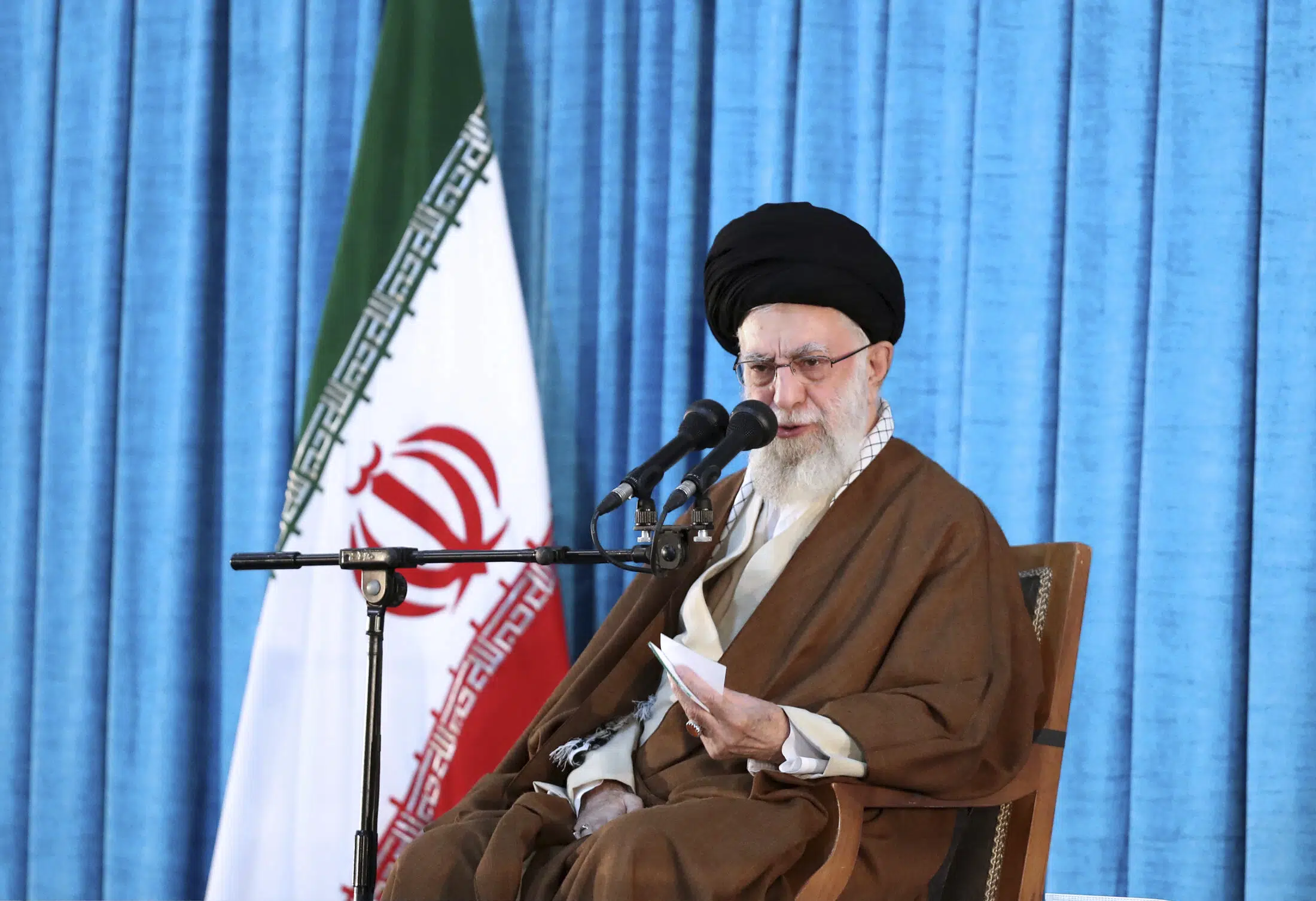US Navy sails first drone through Mideast’s Strait of Hormuz

DUBAI, United Arab Emirates (AP) — The U.S. Navy sailed its first drone boat through the strategic Strait of Hormuz on Wednesday, a crucial waterway for global energy supplies where American sailors often faces tense encounters with Iranian forces.
The trip by the L3 Harris Arabian Fox MAST-13, a 13-meter (41-foot) speedboat carrying sensors and cameras, drew the attention of Iran’s Revolutionary Guard, but took place without incident, said Navy spokesman Cmdr. Timothy Hawkins. Two U.S. Coast Guard cutters, the USCGC Charles Moulthrope and USCGC John Scheuerman, accompanied the drone.
The trip saw the drone safely pass with the accompanying ships through the strait, a busy waterway between Iran and Oman which at its narrowest is just 33 kilometers (21 miles) wide. A fifth of all oil traded passes through the strait, which connects the Persian Gulf to the Gulf of Oman.
“The Iranians observed the unmanned surface vessel transiting the strait in accordance with international law,” Hawkins told The Associated Press. He said an Iranian drone and at least one Houdong-class fast-attack vessel operated by Iran’s paramilitary Revolutionary Guard observed the MAST-13 drone.
The U.S. Navy’s Bahrain-based 5th Fleet patrols Mideast waters, particularly the Persian Gulf and the Strait of Hormuz, to keep open the waterways for international trade, as well as protect American interests and allies. However, Iran views the Navy’s presence as an affront, comparing it to its forces running patrols in the Gulf of Mexico.
Iran’s state-run IRNA news agency acknowledged the drone’s voyage, citing the AP. Iran’s mission to the United Nations did not respond to a request for comment.
The 5th Fleet launched a special drone task force last year, aiming to have a fleet of some 100 unmanned drones, both sailing and submersible, operating in the region with America’s allies.
Iran briefly seized several of the American drones being tested in the region in late August and early September, though there hasn’t been any similar incident since.
The MAST-13 now is operating in the Gulf of Oman, where a maritime shadow war has played out as oil tankers have been seized by Iranian forces and suspicious explosions have struck vessels in the region, including those linked to Israeli and Western firms. Iran has denied involvement in the explosions, despite evidence from the West to the contrary.
The MAST-13′s video feeds can transmit images back to shore and to ships at sea, helping sailors see ships before approaching them, Hawkins said. That can come in handy, particularly as the Navy and Western allies have increasingly seized weapons it believes were from Iran bound for Yemen.
“It puts more eyes out on the water, enabling us to better monitor what is happening,” Hawkins said.
___
Follow Jon Gambrell on Twitter at https://www.twitter.com/jongambrellAP
Source: AP News












